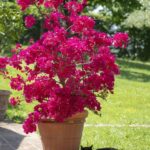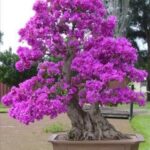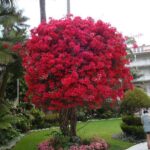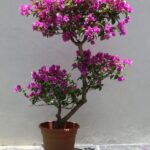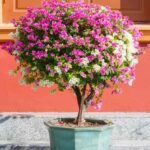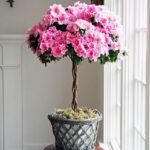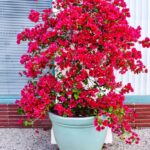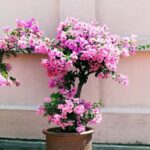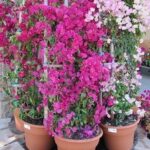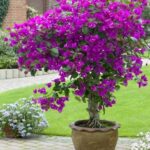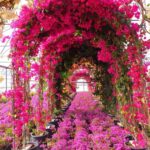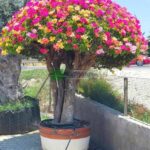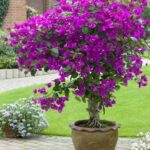Amazing vine for your pergola: Bougainvillea
Amazing Bougainvilleas are versatile landscape plants as they can be grown as vines, bushes, trees or in planters. With bright pink and green foliage and resistance to many diseases and pests, bougainvillea can be a beautiful, easy-to-grow plant.
How to use bougainvillea in the garden
Bougainvillea growers use the plant in a variety of ways to showcase the plant’s unique properties. Here are a few ways to use bougainvillea in your garden:
In a hanging basket: Use a dwarf variety, B. glabra, or a bambino bougainvillea for this method. Smaller plants root better in a basket and you don’t have to cut back as often. In a smaller container, they dry out faster, so these plants need to be watered more often.
As a groundcover: Bougainvillea grows best when given room to spread. So if you have an empty spot in your garden that needs filling, bougainvillea will do just that. Plant them in a higher area that isn’t prone to waterlogging, as bougainvilleas like to be on the dry side.
As a Climbing Plant: This is probably the most common use for bougainvillea as it naturally likes to climb. Bougainvillea do best on trellises, arches, or even fences, as long as the plant has something to grab onto. Chain link fences lend themselves very well to this method.
As a bonsai: Since bougainvillea plants take pruning very well and actually need it to stay healthy, it can be a good plant to grow bonsai style – an ornamental tree or shrub that is constantly pruned and styled to prevent this from reaching its full maturity.
In Pots: Bougainvillea can be planted in pots around your home or outdoors as long as it gets full sun. If you don’t tend to new growth, the plants can tolerate less light, but they need plenty of light to thrive. Use a pot about twice the size of your plant.
9 tips for growing and caring for bougainvillea
Planting bougainvillea can be as easy or complicated as you make it. It is naturally a very easy plant to grow, however there are certain measures you must take to grow the best bougainvillea.
1. Consider the climate. Make sure you are in the correct zone and time of year. Bougainvillea is hardy according to USDA Plant Hardiness Zone 9b and should be planted in spring. Unless you live in one of the warm climates where bougainvilleas grow best, they become deciduous plants, meaning they shed their leaves each year when the temperature drops below freezing.
2. Provide light. Bougainvilleas are full sun plants, so you need to plant them in the sunniest spot in your garden to maximize the flowering cycle.
3. Choose the right soil. Your soil needs to be slightly acidic, gritty, and loose. Some locations already have the perfect soil for growing bougainvillea, but if you don’t, you can increase or decrease the acidity of your soil with a suitable potting mix. Make sure there is enough soil for roots to develop, but not too much as soil will retain too much moisture and lead to root rot. No matter how you plant your bougainvillea, be careful of the root ball as it is quite fragile until the plant is established in its new home.
4. Teach the plants to climb. Bougainvillea plants need exercise if you want the flowering bougainvillea vine to climb on or around something. As new shoots appear you can arrange and push them through open areas of your trellis, fence or arch and repeat as more shoots appear. If there’s nothing for the bougainvillea to cling to naturally, you can tie the woody stems to something like a fence post or parts of the trellis with twine.
5. Shape the plants. If you don’t train your plants to climb and grow them as bonsai instead, they will need regular pruning and shaping. Ditto if you want to grow it as a smaller shrub as it will naturally want to spread out. Bougainvillea in hanging baskets have a little more wiggle room when exercising, but you don’t have to trim them.
